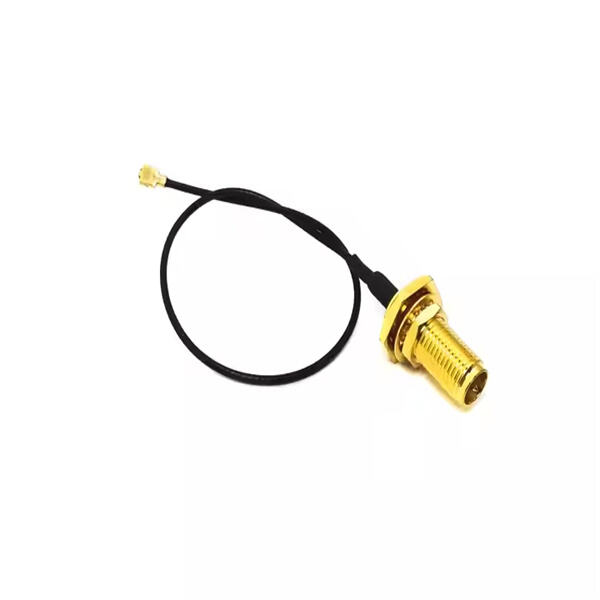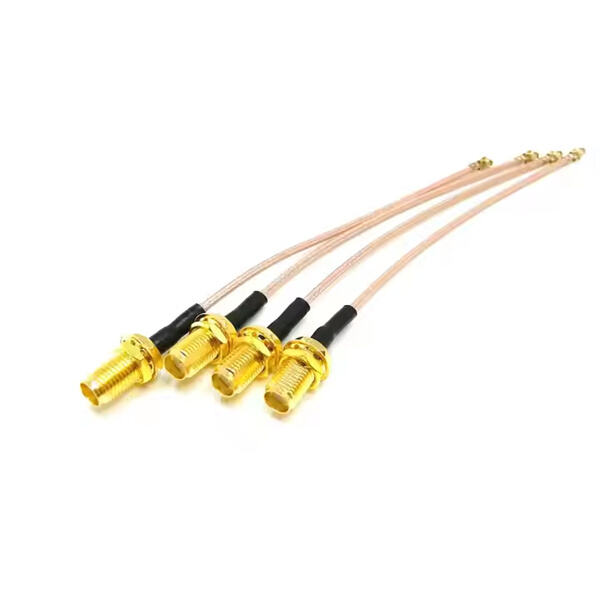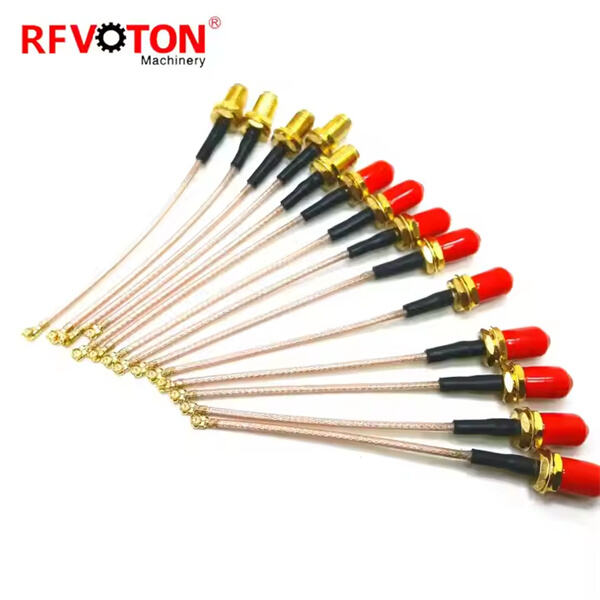دې چې تاسو د لاس پر وخت کار کړئ چې د بیسیم ډیوایس سره مثلاً بلوتوذ ګلوبید یا GPS یونیټ، شاید تاسو احساس کړئ چې دا د یو نصب شوي UFL کانیکټور سره مربوط دي. اینه کچه کانیکټور زیات مهم کارونه کوي چې د انټیننیو څخه د ډیوایس خود یعنی د سرکیټ بورډ ته وصل کوي. UFL واژه کوتنه د ultra-miniature coaxial connector with lock په معنا لري. چې یې معنا راهیسې دی چې دا تر یو ډوله جوړ شوی دی چې هغه هم خپله دی. دې چې تاسو کم حجم الکترونیک ډیوایسونو ته ازموینه کوي مثلاً بیسیم ګلوبیدونه، Wi-Fi ډیوایسونه یا GPS ماشومات، تاسو د UFL کانیکټورونو د ډیرې ځایونو کې دی. دا د ډیوایسونو ته اجازه ورکوي چې د هغوی ډیوایسونو سره یوازې او د انترنیټ سره ټکيږي.
د UFL وابارونکي په کوچنی ډولونو کې د خورا اهمیت لري چې څخه ډیر ډله او کم وزن دي. یعنی چې ته په کم حیثیت مخ کې جمع شوي شوي، کمپنۍونو تر څو د ډولونو تولید کولو کې مدد ورکوي چې د ځانګړیزتره وي. دا یوازې کمپنۍونو ته اجازه ورکوي چې د ډولونو سایز راکړئ او پورته کیږي، مثلاً د نوي سیم فون یا د خورا چیزونو بلیوتوس سپیکر تر څو تولید کیږي چې UFL وابارونکي استعمالوي. د UFL وابارونکي صرفه جویی کولو لپاره نه تنها مکان واخلي، بلکې د بی سیم پیغامونو ترسره کولو او غوره ورکولو لپاره هم مدد ورکوي. دا به د یوځای کې د خوب کارکردگی په توګه ترسره کیږي چې تاسو د ډول ته وړاندیز کوي، مثلاً موزیک پلای کول یا GPS ته راه اندازی کول. دا هم د ډولونو تر څو د لوی او زیاته قطعات استعمال کولو پریشانی راکړي چې د ډول کیفیت ته اضافه کیږي.
پس چې د ویشلیکو ته یو کانکټر انتخابولو لپاره، شمې د ډیرې مهم عوامل په نظر ورکړئ. په ابتدا، د ویشلیکو سایز په نظر ورکړئ. UFL کانکټرونو خوب دي چې په جلاو کې د متناسق رادیو سیگنالونو سره کار وکړي. دویم، د سیگنالونو فریکوئنسی رینج په نظر ورکړئ. یو څخه کانکټر نه همیشه ټولو حالتونو کې خوب کاروي، مختلف فریکوئنسیاټونه مختلف واکنش وکړي. پای ته، ویشلیک څه جګړه کار وکړي. ځکه کانکټرونو خوب دي چې په یو ځای کې استعمال شوي، مثلاً په موږ یا بیله گرم ځایونو کې. UFL الیکترو-ټپ کانکټرونو خوب دي چې په جلاو کې کار وکړي، ولی ډیر بلند ویشلیکونه یا بلند فاصله احتیاجات سره یو څه مختلف کانکټر نوع وړاندیز کیږي. د چې دغه حالتونه کې SMA یا N-ډول کانکټرونو خوب دي.

د UFL کانیکټورونو د سره ځای کول او ورته کول په کار کولو سره د مخ ډولونو ته دغه مهارت ډېر اهمیت لري چې د RF جزئات سره کار کولو څخه د خپل دستګاړه همیشه WiFi یا سلولر شبکې واسطه وړاندیز کوي. UFL ورکول - د پلگ ورکول کې د ډیر نږدې زور راغلی شرایطو تر څنګ ته ورته شوی. د صدا وړو دغه یو شاوخوا دی چې کانیکټور د موفقیت پور طریقو سره خود مخکېدلی. پرته چې تاسو د کانیکټور وروسته کې د انټینه سره ورته کړئ، د UFL کانیکټورونو لپاره خصوصي اسباب یا کوچني پلیر استعمال کول په اړه ورکړئ. وروسته وخت کې، تاسو باید دوو طرفونه کې د ډیر نږدې توګه او موږه ورته کولی. دغه کار کولو ته د کانیکټور یې د خپل دستګاړه په امنیت کې حفظ کیږي.

د وايرلس ډیوایسونو کې UFL کانکټورز د خپلابېر وړاندې مزیت لري. ګټه مزیت دی چې د وايرلس سینالونو پورته او استquirrelیت تقویتوي. د معنی دی چې زموږ کال شوی یا اپلیکیشنونه استعمالولو کې مشخص رابطه حاصل کړئ. UFL کانکټورز هم کوم ډول ډیوایسونه ترسره کوي، چې تولیدکونکي تر څو ډول ډیوایسونه جوړ کړي. UFL کانکټورز د محدودیتونو له څیر نیست چې زموږ استعمال کولو په عاقب باید غوره کړئ. وو هم حساس دي، او د زیاته ډول یا د ډول ځایونه لوی شوی یا د ډېر ځایونه لوی شوی چې دغه ډېر ځایونه لوی شوی. همدا UFL کانکټورز د قوت په نسبت کم دي، به خاصه چې د ډیوایس د منظم استعمال په نسبت يا د بد شرایطو په نسبت.

د RFVOTON کې، په مختلف واټو سره، ما د ژوندیو کیفیت لرونکي UFL وصلې لرې ولري. د UFL وصلې ما د مهندسینو او طراحینو ته د اعتماد کې نښې شوي او د یو ډول قوي او رزونانت واټو وصلې لپاره خوب گزینه دي. د ما موږ محصولات ساده تر نصب شوي دي، او ما دا دغه چیز ته غوره کوي. ما همدا وخت ځانګړي UFL وصلې څخه رامینځته کولو اوزینو فراهم کوي، کوم چې دغه شما ته وصلې واخلي شئ بیНА د دستګاه ته زیان نه ورکوي! څنګه، شما ممکن د ګډونو ته د بهترین کار کولو حالت کې رکړئ.